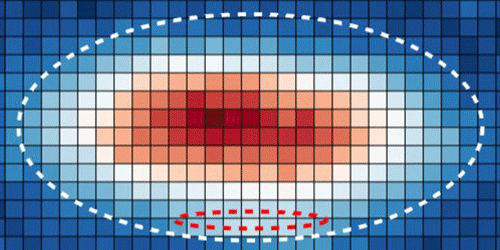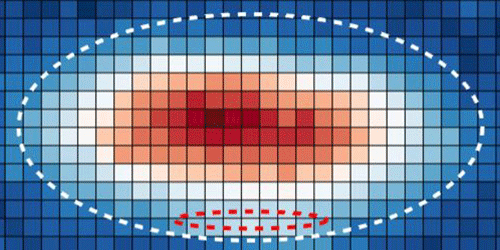Fermions Trapped in Boson Gas
Physicists have become experts at making cold-atom cocktails. By mixing a splash of fermionic atoms with a dose of bosonic atoms, they can, for example, probe the mechanisms of superconductivity or create exotic states of matter. Typically, the masses of the fermions and bosons in these mixtures have been nearly the same, but a new experiment explores the largest mass difference so far with a concoction of bosonic cesium atoms (133 amu) and fermionic lithium atoms (6 amu). By tuning the interactions between the two species, the researchers find that the bosonic gas can act as a surprisingly stable trap for the fermions.
Bose-Fermi mixtures are often used as a way to cool fermionic gases through collisions with the easier-to-cool bosons. At low temperatures, the bosons form a quantum Bose-Einstein condensate (BEC), whereas the fermions become a degenerate Fermi gas, in which nearly all the lowest energy states are filled. By choosing mixtures with a large mass imbalance, researchers hope to explore novel quantum phenomena—like molecular quasiparticles—that have no natural counterpart.
For their cesium-lithium mixture, Brian DeSalvo and his colleagues from the University of Chicago laser cooled the gases separately before loading them together in the same trap. They first verified the presence of a cesium BEC and a degenerate lithium gas. With an applied magnetic field, they then induced an interaction between the fermions and bosons that caused roughly 100 lithium atoms to become trapped in the center of the cesium cloud. This cloud trap functioned even when the interaction between atoms was made strong, a result that contradicts theories predicting that the mixture should become unstable. The team interpreted this unexpected stability as due to losses that prevent the density from reaching a level where the BEC collapses.
This research is published in Physical Review Letters.
–Michael Schirber
Michael Schirber is a Corresponding Editor for Physics based in Lyon, France.





